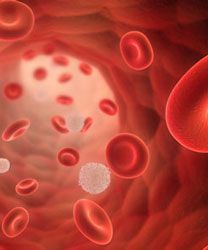Article
Palliative Care Opportunities Missed in Pediatric Hematology/Oncology
Author(s):
Physicians are missing opportunities to refer pediatric patients with hematologic malignancies to palliative care at the end of life, and those who are admitted to palliative care tend to have very advanced disease.
multiple myeloma

Physicians are missing opportunities to refer pediatric patients with hematologic malignancies (HM) to palliative care at the end of life, and those who are admitted to palliative care tend to have very advanced disease.
Patients with HM displayed a very high symptom burden upon admission to pediatric palliative care compared with patients with other diagnoses and the number of patients referred to palliative has declined sharply since a high in 2010.
“Children with HM are referred to outpatient palliative care with almost the full clinical picture of advanced leukemia,” corresponding author Michaela Kuhlen, MD, senior physician, Heinrich Heine University of Dusseldorf, Germany, and coinvestigators wrote.
“Noteworthy, the number of children with HM dying at home is decreasing, instead a substantial proportion of deceased children received high-intensity medical care including novel anticancer treatment strategies. This highlights that, despite an increasing acceptance of palliative care approaches in pediatrics, including pediatric oncology, novel treatment strategies/phase I and II treatments in pediatric oncology may have the risk to miss the point of no return in these children. These patients thus seem to be at an increased risk of dying in hospital as the right time to transfer them to palliative care is oftentimes missed. We believe that within pediatric oncology, there seems to be an increasing need to discuss and question these innovations in order to gain a more comprehensive view.”
The aim of this retrospective, single-site study was threefold: determine the proportion of children with a HM in pediatric palliative home care in relation to the number of children dying of a HM in hospital; determine the clinical characteristics and symptoms, nursing requirements, and time of referral to palliative care team (PCT); and compare these data with data of children with extracranial solid tumors.
Investigators at Germany’s Heinrich Heine University of Dusseldorf determined that 335 children, adolescents, and young adults received at-home treatment from the hospital’s PCT. The PCT cared for 123 children with cancer, 15 (12%) of whom were diagnosed with a HM. Thirteen patients had relapsed at least once and 9 patients relapsed at least twice. One patient with AML presented with refractory disease in the first-line treatment protocol and 1 patient with lymphoma progressed during therapy.
Kuhlen et al concluded that fewer children with HM were receiving home care likely due to an increasing number of children with relapsed/refractory leukemia undergoing intensive relapse treatment who then die in the hospital during intensive chemotherapy/stem cell transplantation. One patient received treatment from the PCT in 2009, a number that increased to 6 in 2010. By 2015 and 2016, the number was back down to 1.
“Notably, during the respective time period, one and a half as many children with HM died in hospital, whereas only a single child with non HM,” wrote Kuhlen et al.
Median time from start of palliative home care to death was 12.3 days in care in children with HM compared to 41.0 in non-HM patients (P = .07). The PCT saw children with HM an average of 3.1 times within the first 7 days of care compared with an average of 2.2 visits for patients with other conditions (P = 0.5).
At each visit during that first week, PCT members counted the median number of symptoms reported by patients. Patients with HM had a median of 94 symptoms (range, 12-190) compared with 47 for children with non-HM conditions (range, 0-236; P = .01), indicating that these patients have a very high symptom burden when being admitted to palliative care.
In general, patients with HM experienced the signs and symptoms of advanced leukemia. The most frequently reported symptoms in patients with non-HM conditions were neurological and gastrointestinal problems and emotional instability.
Hoell JI, Warfsmann J, Balzer S, et al. End-of-life care in children with hematologic malignancies. Oncotarget. 2017;8(52):89939-89948. doi: 10.18632/oncotarget.21188.








